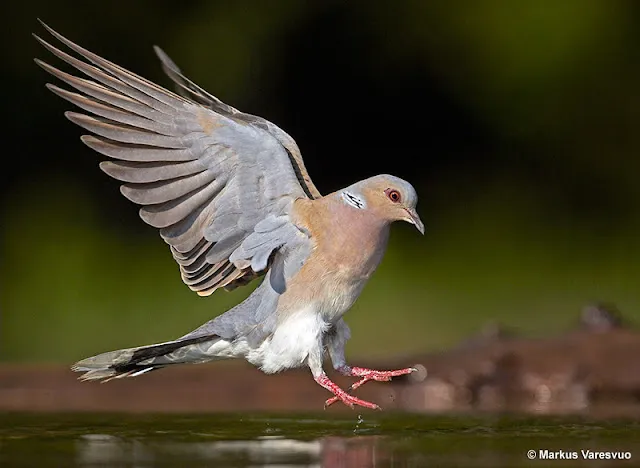Understanding Tarantulas
Tarantulas, with their impressive size and intriguing behaviors, captivate many pet enthusiasts. These fascinating arachnids, despite their intimidating appearance, can make rewarding pets when provided with proper care. This comprehensive guide will provide you with the knowledge necessary to understand and care for these amazing creatures, covering everything from setting up their habitat to recognizing signs of illness. Whether you are a complete beginner or have some experience with other pets, this guide will equip you with the information you need to ensure your tarantula thrives.
What are Tarantulas
Tarantulas are large, hairy spiders belonging to the Theraphosidae family. They are found in various habitats around the world, from tropical rainforests to deserts. Unlike many other spider species, tarantulas are relatively long-lived, with some females capable of surviving for over 20 years. They are primarily nocturnal hunters, using their fangs to inject venom into their prey. Although their venom can be painful to humans, it is generally not life-threatening. Tarantulas are known for their diverse colors and patterns, making them a visually appealing addition to any home.
Types of Tarantulas

There are hundreds of different species of tarantulas, each with unique characteristics and care requirements. Some popular choices for beginner keepers include the Mexican Red Knee (Brachypelma hamorii) and the Chilean Rose Hair (Grammostola rosea), both known for their docile temperaments and relatively low maintenance needs. Other species, such as the Gooty Sapphire Ornamental (Poecilotheria metallica), are more suited for experienced keepers due to their potent venom and more defensive behavior. Researching different species and understanding their specific needs is crucial before bringing a tarantula home, as different species require different temperatures, humidity levels, and feeding regimes.
Tarantula Behavior
Understanding a tarantula’s behavior is key to providing proper care and ensuring its well-being. Tarantulas are generally solitary creatures, and they are most active during the night. They may exhibit different defensive behaviors, such as flicking urticating hairs (which can cause irritation) or raising their front legs in a threat posture when they feel threatened. Some species also have the ability to bite. Observing your tarantula’s behavior will help you identify potential issues, such as stress or illness. A healthy tarantula will typically be alert, active, and have a good appetite. If you observe any unusual behaviors, such as a loss of appetite or lethargy, it is important to investigate the cause.
Setting Up the Ideal Tarantula Enclosure
Creating a suitable habitat is essential for a tarantula’s health and happiness. The enclosure should mimic the tarantula’s natural environment, providing a safe and comfortable space. This includes considering the size of the enclosure, the type of substrate, and the appropriate humidity and temperature levels. The following sections will guide you through setting up the ideal enclosure for your tarantula, ensuring that its needs are met and that it can thrive.
Choosing the Right Tank Size

The size of the enclosure should be appropriate for the size of the tarantula. A good rule of thumb is to provide an enclosure that is at least twice the tarantula’s leg span in width and length. For terrestrial species, the height of the enclosure does not need to be excessive, while arboreal species will require more height for climbing. Avoid enclosures that are too large, as they can make it difficult for the tarantula to find its food and can potentially stress it. Ensure that the enclosure has a secure lid to prevent escapes. Plastic or glass enclosures are both suitable, providing easy access for cleaning and viewing.
Substrate Selection
The substrate is the bedding material that lines the bottom of the enclosure and provides a comfortable environment for the tarantula. The choice of substrate depends on the tarantula’s species and its natural habitat. Common substrate options include: coco fiber, peat moss, vermiculite, and potting soil (ensure it is pesticide-free). Some keepers also mix these materials to create a custom substrate that best suits their tarantula’s needs. The substrate should be deep enough to allow the tarantula to burrow if it is a burrowing species. It should also retain moisture to help maintain the appropriate humidity levels.
Humidity and Temperature Control
Maintaining the correct humidity and temperature is critical for a tarantula’s health. The ideal humidity level varies depending on the species, but generally ranges from 60% to 80%. This can be achieved by lightly misting the enclosure with water, especially for tropical species. You can measure the humidity using a hygrometer. Temperature should also be maintained within the appropriate range, typically between 75-85°F (24-29°C). A heat source, such as a heat mat or a ceramic heat emitter, may be necessary to maintain the correct temperature, particularly in cooler climates. Make sure that the heat source is regulated by a thermostat to prevent overheating. It’s essential to monitor the temperature regularly to ensure your tarantula remains comfortable.
Decorating the Tarantula’s Habitat

Adding decorations to the enclosure can enrich the tarantula’s environment and provide it with hiding places. Suitable decorations include: cork bark, artificial plants, rocks, and branches. These decorations not only enhance the aesthetic appeal of the enclosure but also provide the tarantula with opportunities to explore, hide, and feel secure. Ensure that all decorations are safe and non-toxic. Avoid using decorations with sharp edges that could potentially injure the tarantula. Always ensure that there is enough space for the tarantula to move around freely.
Feeding Your Tarantula
Feeding is a vital aspect of tarantula care, and understanding their dietary needs is crucial. Tarantulas are opportunistic predators, meaning they will eat whatever they can catch. Their diet mainly consists of insects, but it is also important to consider feeding frequency and the type of food provided. Providing the right food and following proper feeding schedules helps ensure your tarantula’s health and vitality. In the following sections, we will cover the essential details for feeding your tarantula.
What Tarantulas Eat
Tarantulas primarily eat insects, such as crickets, mealworms, roaches, and even small vertebrates if the tarantula is large enough. The choice of food depends on the tarantula’s size and species. Always ensure that the insects you feed your tarantula are gut-loaded with nutritious food prior to offering them. Gut-loading involves feeding the insects a nutritious diet for at least 24 hours before offering them to your tarantula. This ensures that the tarantula receives a balanced diet. Avoid feeding wild-caught insects, as they may carry parasites or diseases. Also, it’s important to remove any uneaten insects from the enclosure to prevent them from stressing your tarantula.
Feeding Frequency

The feeding frequency depends on the tarantula’s age and size. Spiderlings should be fed more frequently, typically every other day, while adult tarantulas can be fed less often, such as once a week or even less. Overfeeding can lead to obesity and health problems, so it’s important to monitor your tarantula’s abdomen. A healthy tarantula will have a slightly rounded abdomen. If the abdomen becomes excessively large, it may indicate overfeeding. Adjust the feeding schedule accordingly. Always provide fresh water in a shallow dish, ensuring your tarantula stays hydrated.
Watering Your Tarantula
Water is essential for a tarantula’s health. Ensure your tarantula has access to fresh, clean water at all times. Provide a shallow water dish that the tarantula can easily access and that is not too deep to pose a drowning risk. For some species, misting the enclosure regularly is an additional method of providing moisture, especially for those species that prefer higher humidity levels. Regularly check and refill the water dish. It is best to use bottled water or dechlorinated tap water to avoid the harmful effects of chlorine or other chemicals that may be found in tap water.
Tarantula Molting Process
Molting is a natural process where tarantulas shed their exoskeletons to allow for growth. This process can be a stressful period for the tarantula, so it is essential to understand the signs of molting and how to provide the right care during this time. Molting also allows tarantulas to regenerate lost limbs and to replace internal organs. The following sections will provide you with the necessary information to care for your tarantula during this critical time.
Recognizing Molting Signs

Several signs indicate that your tarantula is preparing to molt. The tarantula may stop eating, become lethargic, and spend more time in its hide. The abdomen may appear dark and swollen. You may also notice that the tarantula is building a web mat or sealing itself off in its burrow. It is important not to disturb the tarantula during this time. Avoid handling or feeding the tarantula. If you notice these signs, provide a quiet and undisturbed environment to minimize stress.
Caring for a Molting Tarantula
During the molting process, it’s crucial to provide a safe and stable environment. Maintain the correct humidity and temperature levels. Do not disturb the tarantula. Avoid handling it or opening the enclosure unnecessarily. Provide fresh water, but do not offer food until the tarantula has successfully molted. Monitor the tarantula regularly, but do not interfere with the process. The molting process can take several hours to a few days, depending on the tarantula’s size and species.
Post-Molting Care
After molting, the tarantula will be soft and vulnerable. Wait a few days to allow the exoskeleton to harden before offering food. Start with small meals and gradually increase the size of the prey. Provide fresh water. It is normal for the tarantula to be less active immediately after molting. Handle the tarantula very carefully, as it is more susceptible to injury during this period. The tarantula’s fangs may also be softer for a time after molting, so be extra cautious.
Common Tarantula Health Issues

Tarantulas are generally hardy creatures, but they can be susceptible to certain health issues. Understanding these issues and how to prevent them is important for ensuring your tarantula’s well-being. These issues can often be prevented or treated with the proper care and attention. In this section, we will discuss some of the most common health problems, and how to take preventative measures.
Parasites and Diseases
Tarantulas can be affected by parasites, such as mites, and bacterial or fungal infections. Mites can be introduced through new substrate or feeders. If you notice mites, you should quarantine your tarantula and treat the enclosure to eliminate them. Bacterial and fungal infections can arise from poor hygiene or excessive humidity. Symptoms of these infections can include lethargy, loss of appetite, and discoloration. If you suspect your tarantula has a disease, consult with a veterinarian specializing in exotic animals. Ensure that the enclosure is properly cleaned and maintained to prevent the spread of any potential issues.
Preventive Measures
Preventing health issues is easier than treating them. Regularly clean the enclosure, removing any uneaten food and waste. Maintain the correct humidity and temperature levels. Provide a balanced diet and avoid overfeeding. Quarantine new tarantulas before introducing them to your existing collection. Inspect the tarantula regularly for any signs of illness, such as changes in behavior or appearance. If you notice any issues, seek veterinary advice immediately. Proper care and observation are critical to ensuring your tarantula remains healthy and happy.
Handling Your Tarantula

While tarantulas are generally not aggressive, handling them should be done with care and consideration for their well-being and your safety. Handling is generally not recommended, especially for beginners, as it can cause stress to the tarantula and increase the risk of bites. If you decide to handle your tarantula, there are several precautions you should take to ensure both your safety and the safety of the tarantula. This section provides guidelines for safe handling practices.
Safe Handling Techniques
If you choose to handle your tarantula, do so with caution. Always approach the tarantula calmly and slowly. Avoid sudden movements that could startle it. Handle the tarantula over a soft surface, such as a bed or a carpet, in case it falls. Gently encourage the tarantula to walk onto your hand. Never try to grab or restrain the tarantula. Wash your hands thoroughly before and after handling your tarantula. Always be aware of the tarantula’s behavior and body language. If the tarantula appears agitated, stop handling it immediately and return it to its enclosure. Be extremely cautious when handling fast-moving species.
Signs of Stress in Tarantulas
Recognizing signs of stress in your tarantula is vital to prevent injury and promote their well-being. Some signs of stress include defensive postures, such as raising their front legs or flicking hairs. Rapid movement, such as running away, may also indicate stress. If the tarantula is flicking hairs, avoid handling it. If the tarantula is displaying any signs of stress, immediately return it to its enclosure and allow it to settle down. A stressed tarantula is more likely to bite. Avoid handling tarantulas unnecessarily, and always prioritize their comfort and safety.
Tarantula Species Comparison
Choosing the right tarantula species is crucial for both the spider and the keeper. Some species are more suitable for beginners, while others require more experience. Understanding the differences between species, including their temperament, size, and care requirements, is essential. The following sections will provide a comparison of some popular species, helping you make an informed decision.
Best Tarantulas for Beginners
Several tarantula species are well-suited for beginners. The Mexican Red Knee (Brachypelma hamorii) is known for its docile temperament, striking colors, and relatively easy care. The Chilean Rose Hair (Grammostola rosea) is also a popular choice, appreciated for its calmness and hardiness. These species are typically less defensive and have relatively slower growth rates, making them easier to manage. Before you get any tarantula, however, it’s always best to do some research. Always have an understanding of the species before acquiring it.
Advanced Tarantula Keeping
More experienced keepers may choose to keep species with more challenging requirements. Some species, such as the Gooty Sapphire Ornamental (Poecilotheria metallica), require advanced knowledge and care. They are known for their potent venom and defensive behavior. Others, such as the Cobalt Blue (Cyaneopubescens), need specific humidity and temperature gradients. Advanced keepers often create specialized enclosures and meticulously monitor conditions. Keeping these more challenging species requires research and a deep understanding of their specific needs.
Turtle Doves vs Tarantulas
The initial question posed was whether tarantulas and turtle doves could live together. Generally, they can’t and shouldn’t. While both are popular pets, their requirements and compatibility are vastly different. Trying to keep them together would be detrimental to both animals, because of the predator-prey dynamic.
How to care for Turtle Doves
Turtle doves are birds and, as such, require a diet primarily based on seeds, grains, and small amounts of fruits and vegetables. They need a spacious aviary or cage with perches and toys for enrichment. They require regular cleaning of their living space and access to fresh water. Maintaining a clean environment is crucial for their health. Regular veterinary check-ups are also important for their well-being.
Can they live together?
No, they cannot. Tarantulas are predators, and turtle doves are prey. Even if the tarantula didn’t directly attack the dove, the fear and stress would be detrimental to the dove’s well-being. The different environmental requirements also make it impossible to share a habitat. The humidity, temperature, and enclosure needs of a tarantula are very different from what a turtle dove needs to survive. Mixing these species would be unethical and dangerous.
Conclusion
Caring for a tarantula can be a rewarding experience, providing the keeper with a unique glimpse into the world of these fascinating creatures. By understanding their needs, providing a proper habitat, and ensuring proper care, you can create a thriving environment for your tarantula. Remember, responsible pet ownership is the key to a long and fulfilling life for your pet. Always continue learning and researching about your tarantula to ensure its well-being. While they cannot be housed with turtle doves, tarantulas are amazing pets with distinct and captivating features.
